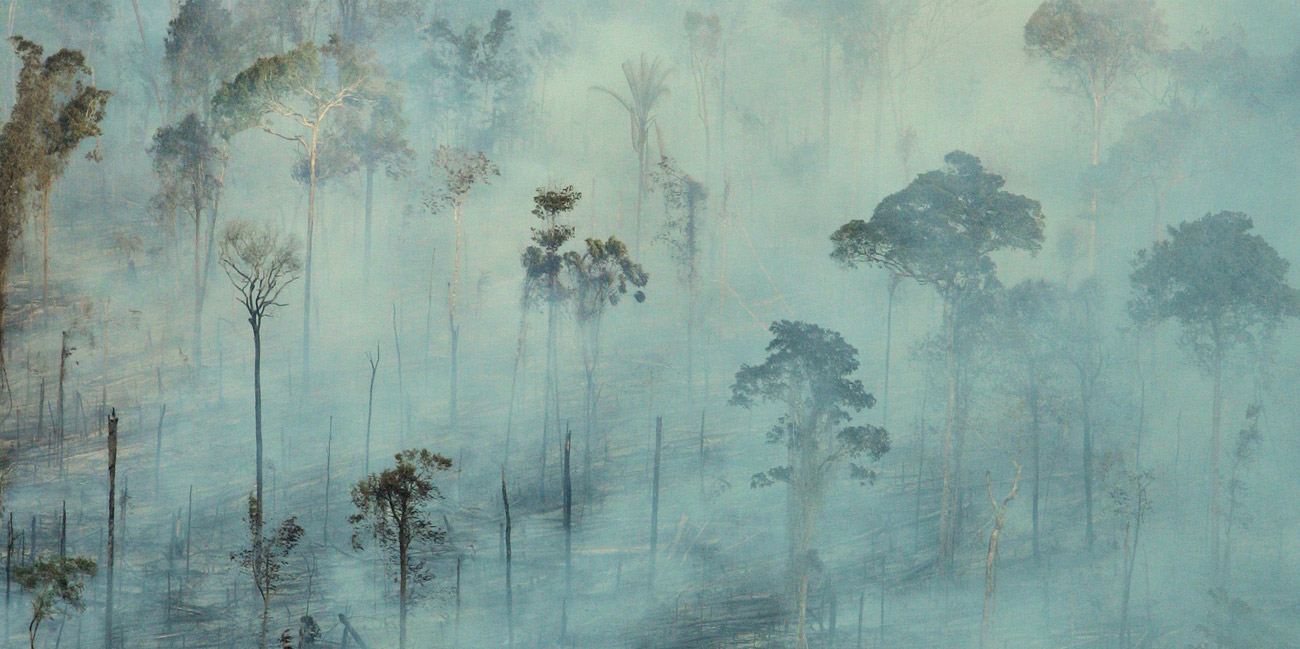Partnerships to protect the forest
Amazonian fires are started by humans and they can be stopped by humans – with partnerships, more investments in forest conservation and sustainable agriculture, argues Rachael Garrett.

It’s hard not to grieve over images of the Amazon rainforest burning. Scorched earth and smoke replacing a carpet of green, teeming with life. With an image like this and the times we are living in, you might be forgiven for wanting to despair. But that response would be wrong.
Fires in the tropics – a human problem

Fires in the Amazon are started for two purposes – deforestation or agricultural management. The large fires that we witness from space are likely associated with deforestation. Land speculators and farmers clear the forest and then burn the leftover vegetation. Many other fires are small in nature and burn under the forest canopy. They occur on the numerous small farms in the Amazon when farmers burn the vegetation that regrows on their fields.1 The latter process can contribute to forest degradation when the fires escape from agricultural fields.2
Recurrent fires lead to a decline in the health of the impacted forest, which over time can result in even more intense fires. As of right now, we simply don’t know what proportion of the Amazonian fires fall into each of these categories, nor do we know the scope of their impacts on forest health.
The causes are both technological and structural
It’s important to recognize that destruction is not the goal of a vast majority of fires set in the Amazon. Farmers use fires to manage their land because they lack access to machinery or fertilizers. They also use them because their risks3 of investing in other technologies are too high since they are often exposed to fires that have escaped from their neighbors’ properties.
“Companies need to work in partnership with local governments and farmers’ unions to provide financial resources for improved agricultural technologies alongside strict conservation policies.”Rachael Garrett
Though Brazil’s President Jair Bolsonaro seeks to pit agricultural development against Amazonian protection, farmers stand to benefit substantially from choosing improved agricultural practices and forest conservation over deforestation and fire use. The Brazilian Agricultural Research Corporation (Embrapa) has identified numerous locally appropriate technologies, including integrated crop and livestock systems and agroforestry, which can more than triple the profits and yields of farmers, while reducing greenhouse gas emissions.4 Our research has also shown that when land becomes scarce through a strengthening of forest protection policies, farmers see these technologies as more appealing5 and have substantially intensified their production6.
Timing and partnerships are critical
It would be naïve to think that intensification alone would solve the problem of Amazonian deforestation. Indeed, improvements in agricultural practices, when driven by market stimuli alone, can lead to more deforestation.7 But when stimulated by changes in environmental policy, as has recently occurred8, intensification can go hand and hand with reductions in deforestation.
To move forward, companies need to work in partnership with local governments and farmers’ unions to provide financial resources for improved agricultural technologies alongside strict conservation policies, such as territorial approaches to market exclusion and financing based on conservation performance. These efforts need to be bold and transformative – they need to enable large groups of farmers within the same area to simultaneously eliminate fire use and adopt more sustainable practices or else they won’t work.
A window of opportunity
The recent fires in the Amazon seem devastating, but the public outrage and media interest they have generated are creating an important window for ramping up forest conservation, even in light of Brazil’s own declining federal forest governance. Companies are eager to show that they can be part of the solution.9 Civil society and international governments seem poised to throw millions of dollars at the problem.10
Rather than one-off pledges focused only on recent fires, these actors should invest in partnerships with local governments that aim to reconcile conservation with sustainable development in the Amazon through the transformation of agricultural practices.
References
1 New York Times: external page What Satellite Imagery Tells Us About the Amazon Rain Forest Fires.
2 The Royal Society: external page Drought-induced Amazonian wildfires instigate a decadal-scale disruption of forest carbon dynamics
3 Norwegian University NMBU: external page The Amazon Barbecue
4 Environmental research letters: external page Tradeoffs in the quest for climate smart agricultural intensification in Mato Grosso, Brazil
5 Land Use Policy: external page Perceptions of integrated crop-livestock systems for sustainable intensification in the Brazilian Amazon.
6 Global Environmental Change: external page Intensification in agriculture-forest frontiers: Land use responses to development and conservation policies in Brazil.
7 Global Food Security: external page Does intensification slow crop land expansion or encourage deforestation?
8 AAEA: external page Agricultural Productivity and Forest Conservation: Evidence from the Brazilian Amazon
9 Reuters: external page Corporate fallout for Brazil heats up despite signs Amazon fires may be slowing.
10 NBC News: external page Why it will take more than $20M to help Brazil put out Amazon fires
Comments
No comments yet